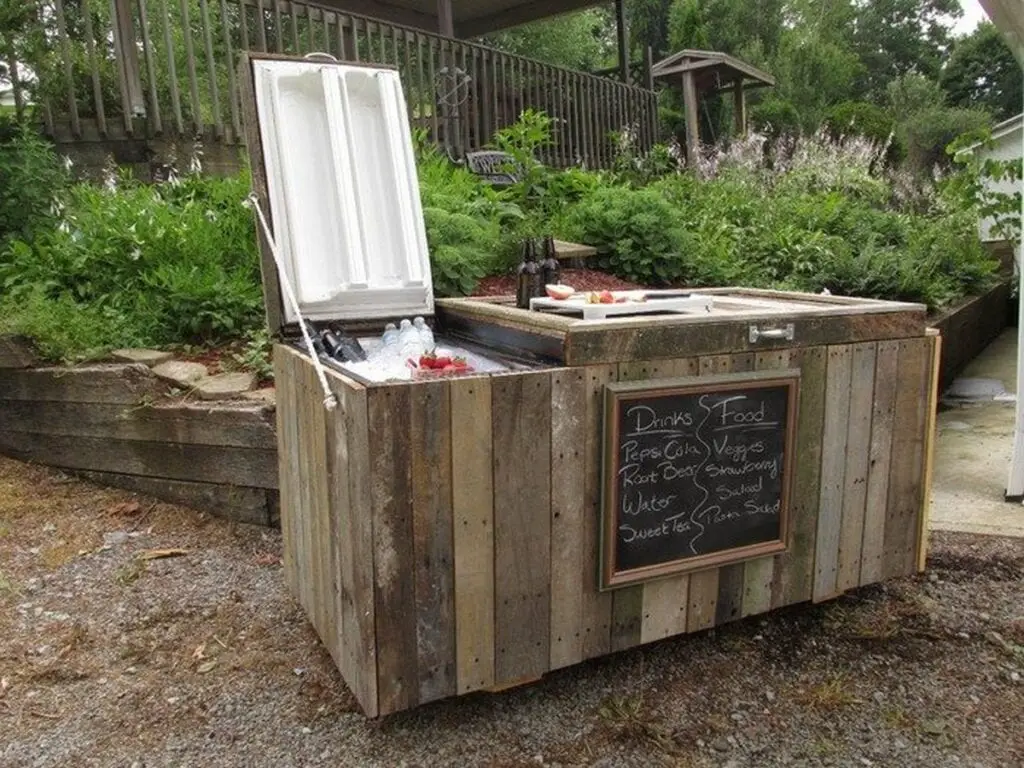Now, this is the best DIY old fridge rustic cooler project to do when you need a ‘new’ one already. Why? Because it has a lot more features than all the other outdoor coolers out there!
This DIY old fridge rustic cooler idea makes use of an old, non-working fridge and pallets, meaning it can be a very inexpensive project if you have free access to these materials. If not, try Craigslist and ask local pallet suppliers. That will surely still be easy on your pocket. ;)
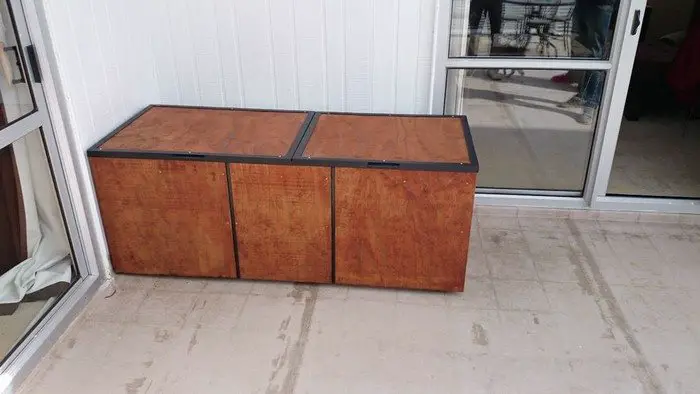
Though it seems like a big upcycling project, anyone can finish it even in just one weekend. You don’t need to be a professional, and you don’t need very special building tools and equipment for the entire process.
What’s great about this DIY old fridge rustic cooler is that you have the option to use the small compartment for little gatherings, or the large one for really big parties. The small cooler also works great for chilling some salad, fruits, and other food, while you use the bigger compartment for all the drinks.
If you’re not using the big compartment, you can use its lid as a counter for preparing food or as an extra table!
And you don’t have to worry about cleaning the cooler afterward. This tutorial also discusses how to provide good drainage for easy cleaning and maintenance.
Just add wheel casters for easy moving anywhere in your backyard. Then add a blackboard menu so that guests readily know what’s inside. And there you have it, the perfect rustic outdoor cooler that is also a great conversation starter with guests!
Hmm, do you think this old fridge rustic cooler can get any better?
Click on any image to start the lightbox display. Use your Esc key to close the lightbox.![]()
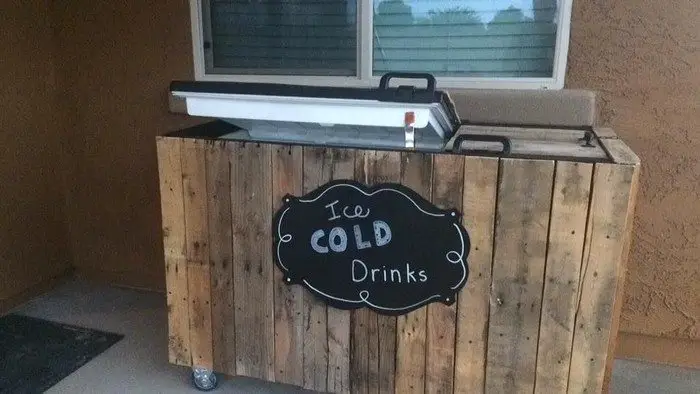

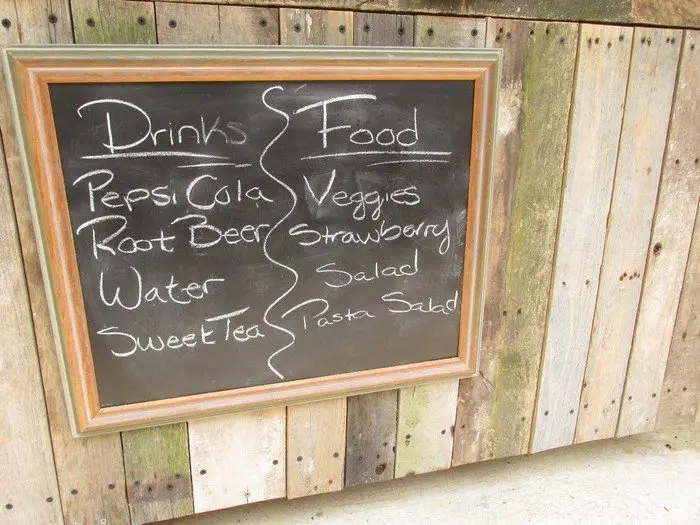
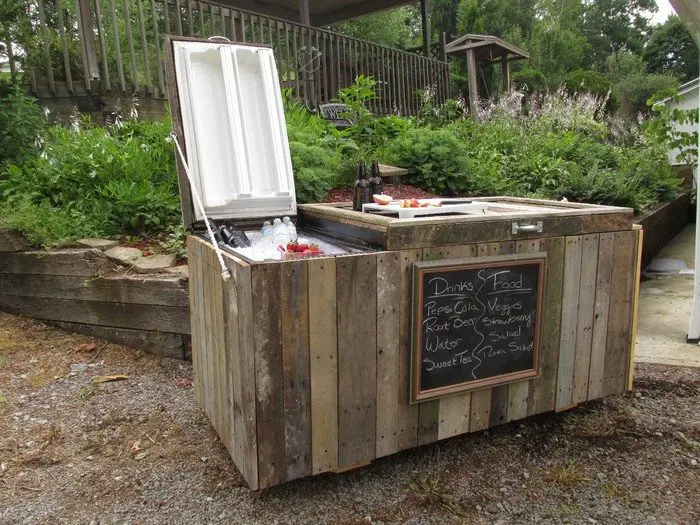
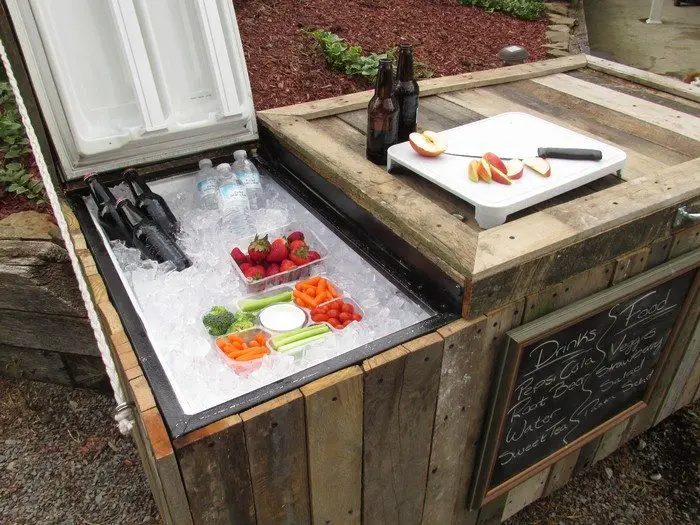
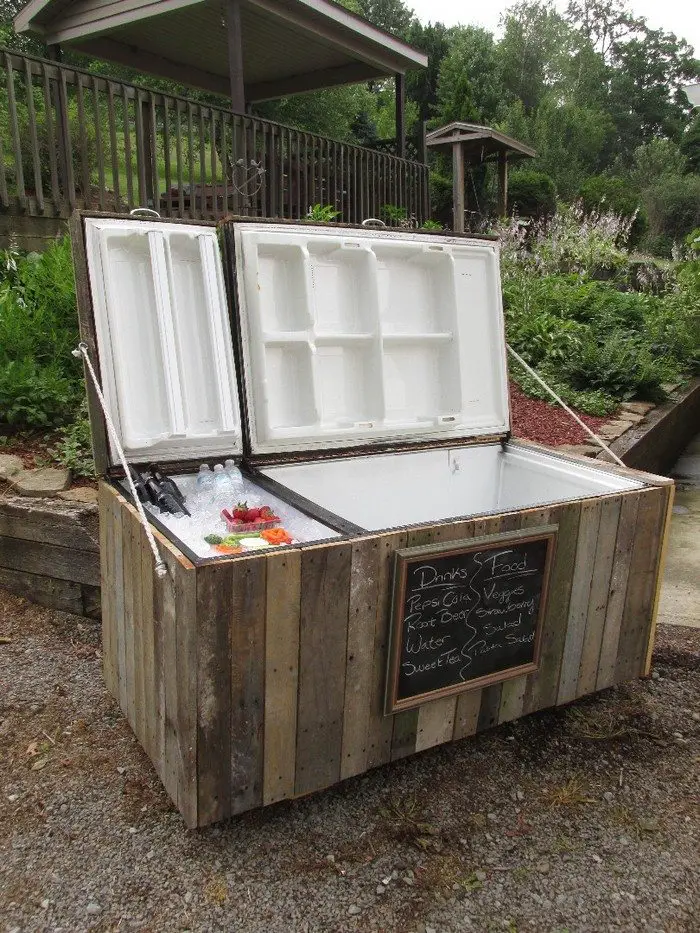
Building an Old Fridge Rustic Cooler
Materials
- Old Refrigerator
- Pallets
- 2 x 4 Lumber
- Screws
- Caulking
- Liquid Nails
- Wheel Casters
- PVC / Brass Fittings
- Rope
- Eye Bolts / Hooks
- Black Spray Paint
Tools
Instructions
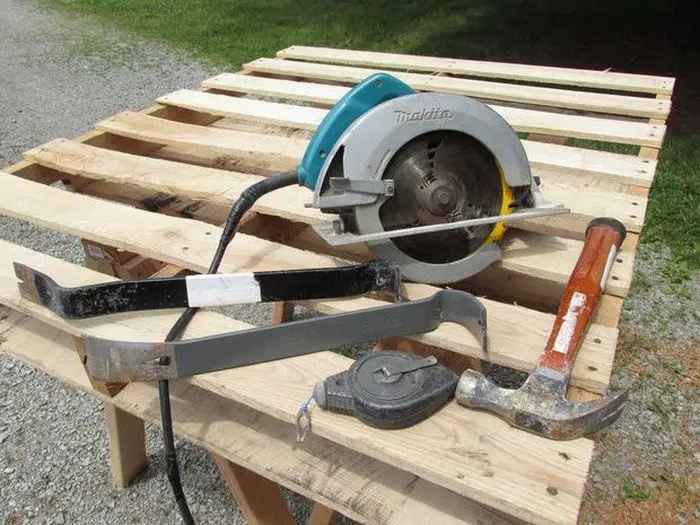
Breaking down the pallets for my old fridge rustic cooler can be a bit of a challenge considering how well they’re put together.
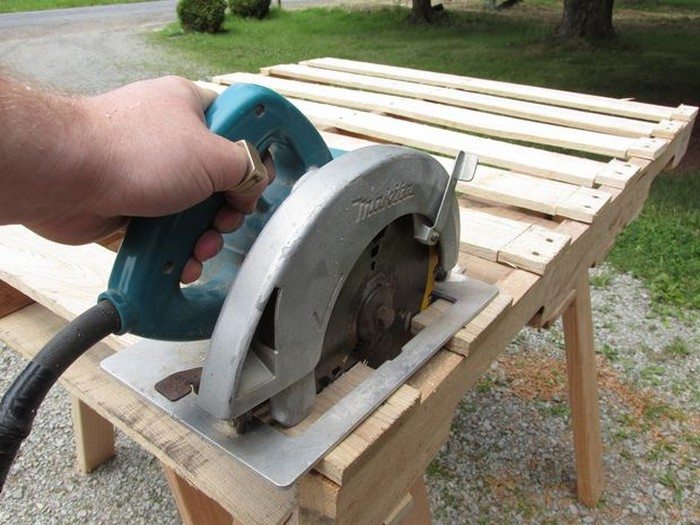
The method that seems to work the best for me is to cut through the deck boards where they attach to the side stringer boards of the pallet.
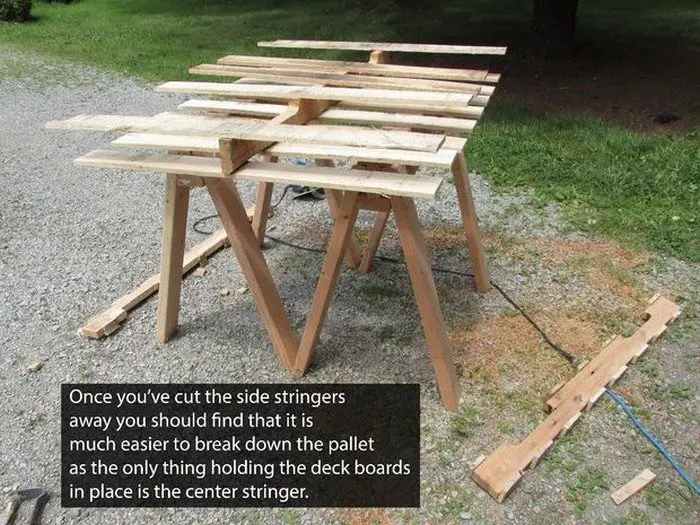
This leaves only the middle stringer and the deck boards attached and with a bit of leverage and some hammering, you can easily separate the deck boards for use in your old fridge rustic cooler project.
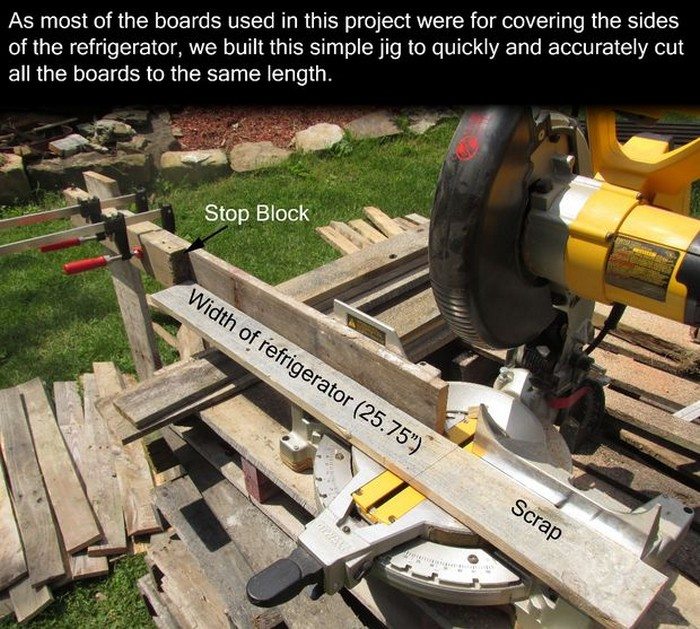
Once the pallets are dismantled, the next step for your old fridge rustic cooler is to process the deck boards so that they are 25.75″ long (the width of the refrigerator. To do this we assembled a quick jig for the chop saw that allowed us to index the boards to the correct length quickly so that all of the wood could be processed as efficiently as possible.
We also left a few deck boards uncut so that they would be long enough to use for trim pieced in a later step.
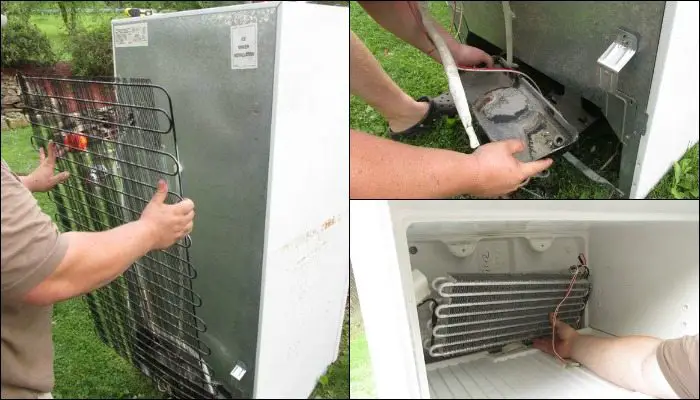
Dismantling the refrigerator is a pretty straightforward process, basically, just take out the screws and most of the electronics and shelving pull right out.
One very important thing to be aware of though is the Freon lines. It is illegal to cut Freon lines and allow the gas to escape into the atmosphere! Getting caught doing so will warrant a hefty fine, and moreover, it’s just a bad idea as you’re polluting the air and the environment.
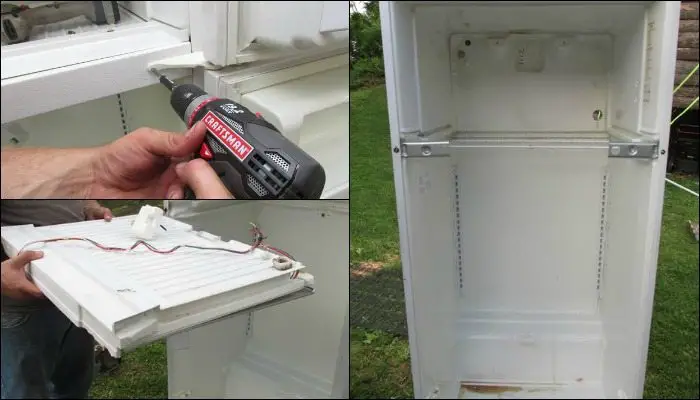
In our situation, the refrigerator we used was left in the basement of my sister’s newly purchased house and the previous owners decided for some reason to cut the lines before leaving so we didn’t have to contend with Freon removal.
However if you’re thinking about tackling this old fridge rustic cooler project and don’t already have a busted Freon-free refrigerator at your disposal fear not, there are safe ways to deal with the Freon. Check out the links below to learn how to safely remove Freon from your refrigerator. I think these guides were built for the purpose of scraping the refrigerator for metal, but they’ll work just fine for this project too:
- Refrigerator Freon Removal Guide
- Refrigerator Cooling System Removal Without Cutting Refrigerant Lines
Once you have the refrigerator stripped down you’re ready to start the next step: Painting!
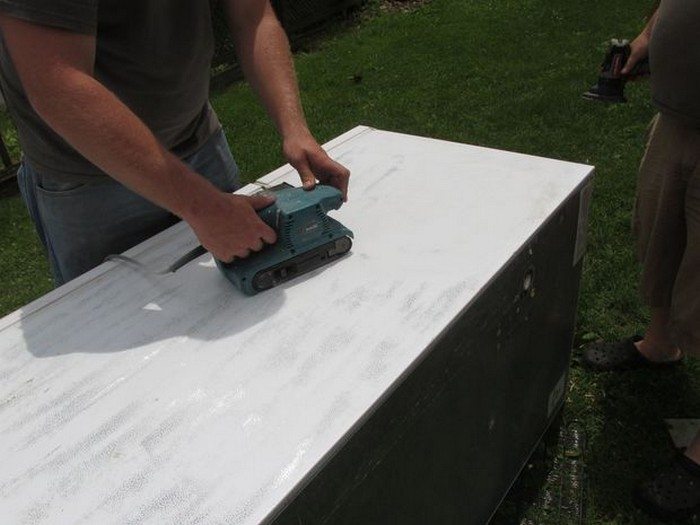
Painting the refrigerator isn’t a necessary step, the reason we chose to do it was because the bright white enamel of the refrigerator was very visible where the unfinished edged of the pallet boards came together and the white showing through the boards made the old fridge rustic cooler project look very unfinished. If you’re lucky enough to have a black refrigerator for this project then you can skip this step otherwise, grab a sander to rough up the surface of the refrigerator and about 4 cans of flat black spray paint and get to work.
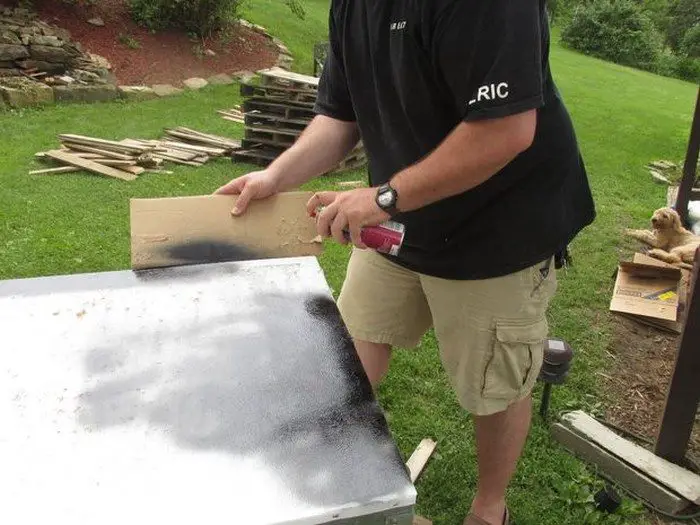
Note: Try to avoid spraying the gaskets that seal the refrigerator doors. The paint may cause the gaskets to seal less effectively making your refrigerator/cooler less effective.
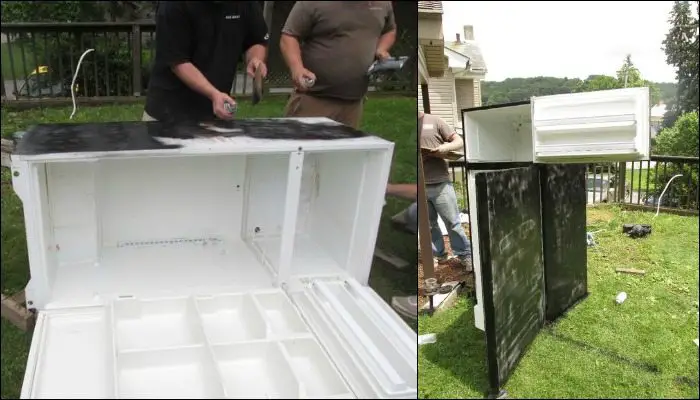
Note: Don’t worry too much about getting a perfect coat of paint for your old fridge rustic cooler. Most of the refrigerator is going to be covered with wood. The only goal of the paint is to cover up the thin spaces the will be visible where the pallet boards don’t quite meet. The last picture on this step is the finished paint job we moved forward with and as you can see, it isn’t all that pretty.

With the refrigerator painted black, the next step of your old fridge rustic cooler is to start covering the sides, top, and bottom of the refrigerator with the reclaimed pallet wood. We started by laying out the cut pallet boards to see how they would fit together on the side of the refrigerator. Making them fit together, and making everything look good, took a bit of time as some of the pallet boards had to be fit together like puzzle pieces.
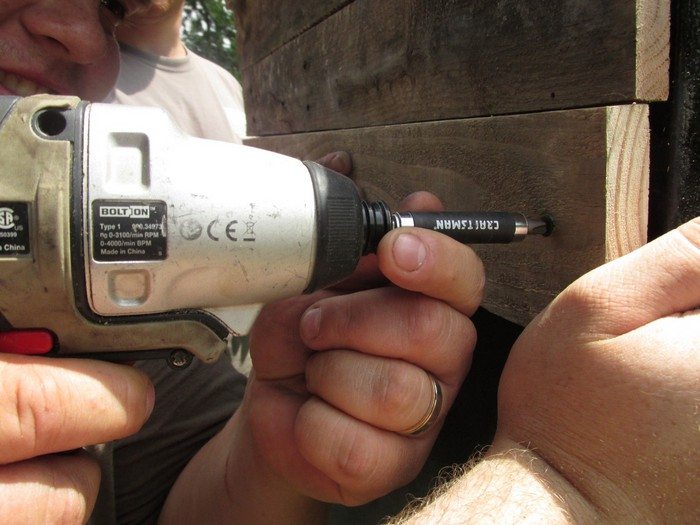
Once everything looked good we started attaching the boards using a combination of liquid nails and 1 1/4″ wood screws. The screws were long enough to go through the outer casing of the refrigerator, but not so long that they would puncture the inside old fridge rustic cooler compartment, the screws also provided clamping pressure to ensure a good bond between the liquid nails, wood, and refrigerator.
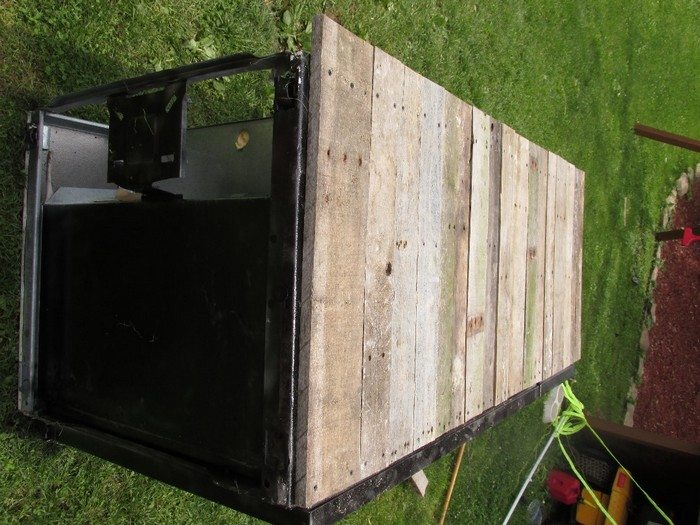
The top and sides of the refrigerator were very easy to cover with wood, (the only small hang-up was accommodating the door hinge on the top of the refrigerator which required a bit of router work to make one of the boards fit properly).

The bottom of the old fridge rustic cooler proved to be a little more work as we had to frame some parts of it in with 2″ X 4″s before we could add the pallet wood siding.
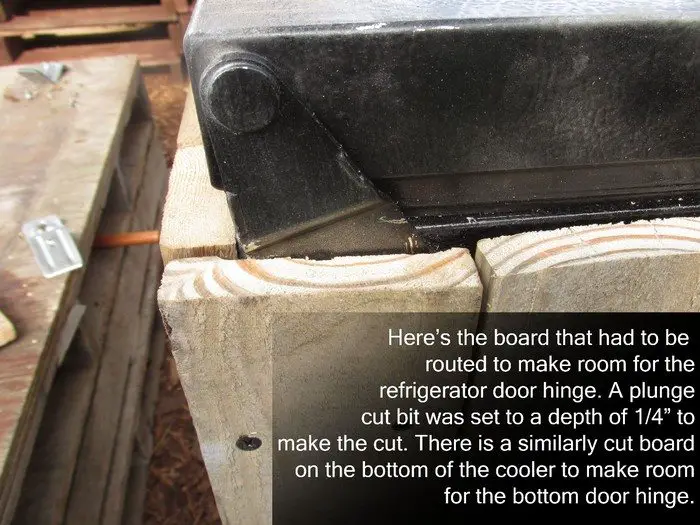
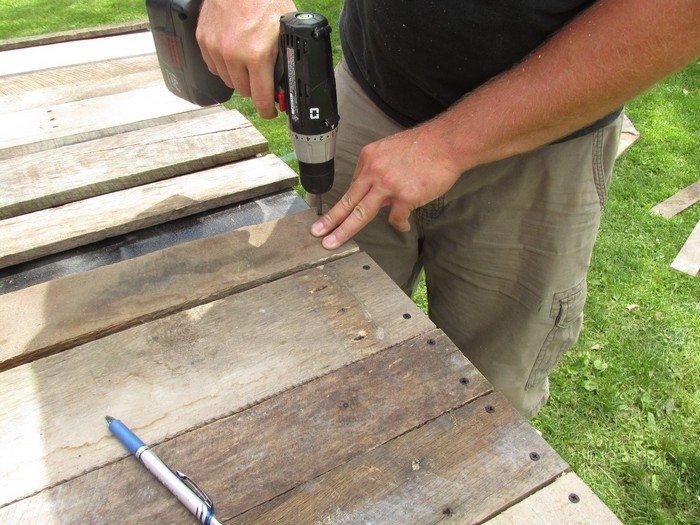
Covering the doors of the old fridge rustic cooler with wood is pretty similar to covering the sides with the only real difference being that it takes a bit more craftsmanship to keep everything looking nice.
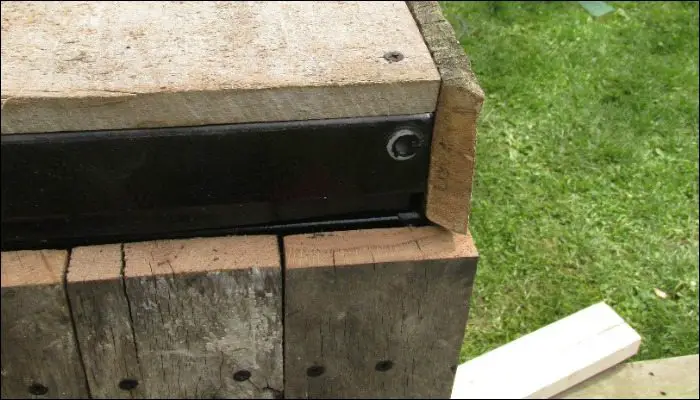
We started by covering the edges of the old fridge rustic cooler doors, cutting the pieces so that they were 3/4″ wider than they needed to be. This extra width worked to hide the cut edges of the 3/4″ thick pallet boards that were used to cover the front faces of the doors.
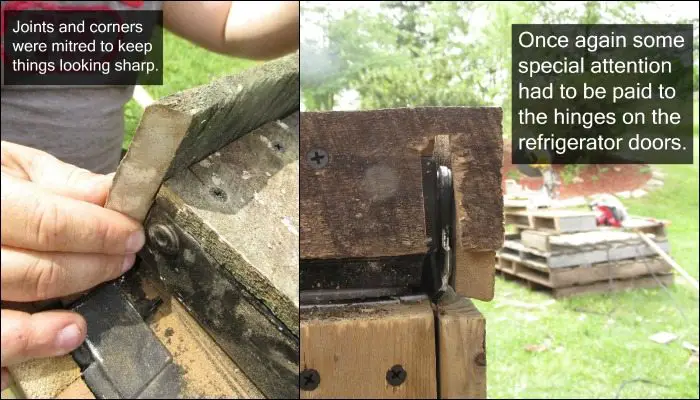
Lastly once the front faces and edges were covered, trim boards were added along the edges of the doors to give everything a finished appearance.
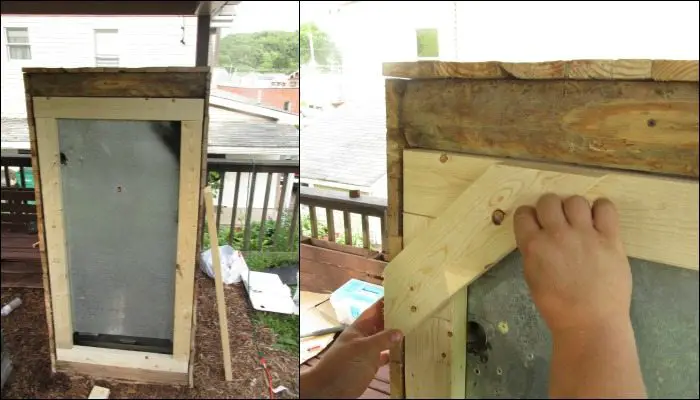
One of the most important considerations when building this old fridge rustic cooler was a way to make it portable so that it could be taken to different parties or events as needed.

On that end, there is an under-structure made of 2″ X 4″s that supports the weight of the old fridge rustic cooler and also provides mounting points for casters.
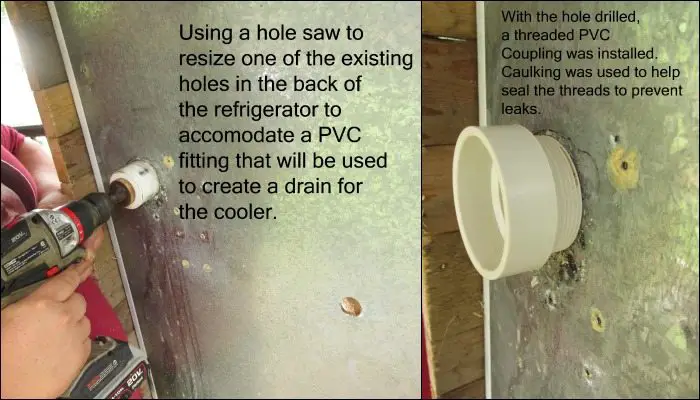
One of the bigger challenges of this project ended up being waterproofing. Believe it or not, refrigerators are not built to be waterproof when laid horizontally, there are holes for wiring, holes for attaching ice makers, and apparently, just some holes for no other reason than to make the process of waterproofing a refrigerator just a little bit harder.

Nevertheless, with a little time and a lot of caulking we were able to seal everything up nice and tight. The smaller holes were easily sealed with a dab or two of caulking, the larger holes required a combination of PVC plugs and caulking, and the largest hole ended up being used to create a really handy drain so that the cooler can be emptied of melted ice and water by the twist of a handle. Once everything was sealed and the caulking was given sufficient time to cure, the cooler was filled with water to check for leaks, any leaks found were fixed with more caulking and once everything was watertight the cooler was almost ready for use.
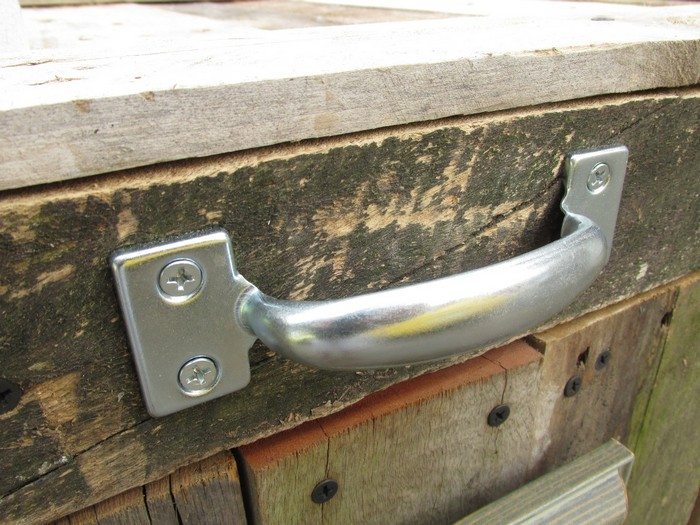
With all the major work done, the last step of the project is to give the cooler a little character and charm. Heavy-duty handles were added to both the cooler bay lids to make them easier to open.

Rope catches were added to keep the lids from opening too far, and a chalkboard was added to the front to let people know what would be available inside the cooler.
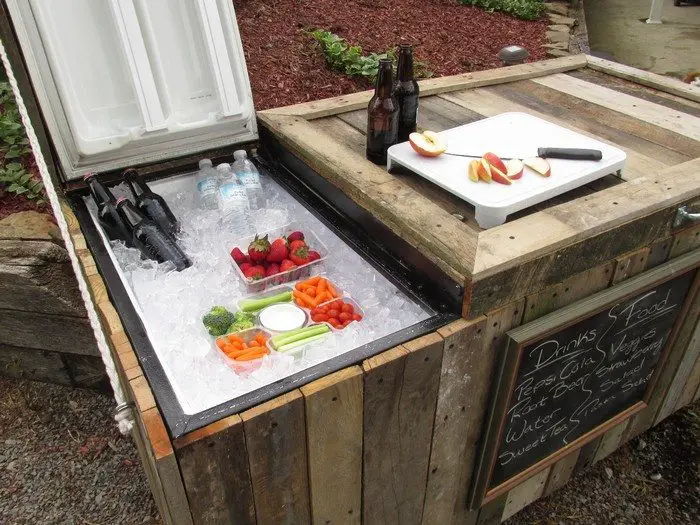
This was a really fun project to work on. And it has already proven to be a useful addition to our summer evening cookouts and other parties. Not to mention that it is also a great conversation piece, and really catches people off guard when they open the cooler to find what used to be a refrigerator.
Thanks to Matt2 Silver for this great project!
Here’s a quick video…
Conclusion
Crafting an old fridge into a rustic cooler is a prime example of inventive upcycling that not only adds a unique charm to outdoor gatherings but also serves a practical purpose. With the ability to accommodate both small and large parties, its versatility and the added convenience of easy mobility and cleaning make it an exceptional outdoor accessory. This DIY project showcases how creativity paired with simple materials can transform an unused refrigerator and pallets into a conversation-starting centerpiece for any backyard event.
We have more amazing cooler ideas. Check out our treasure chest cooler guide next!

